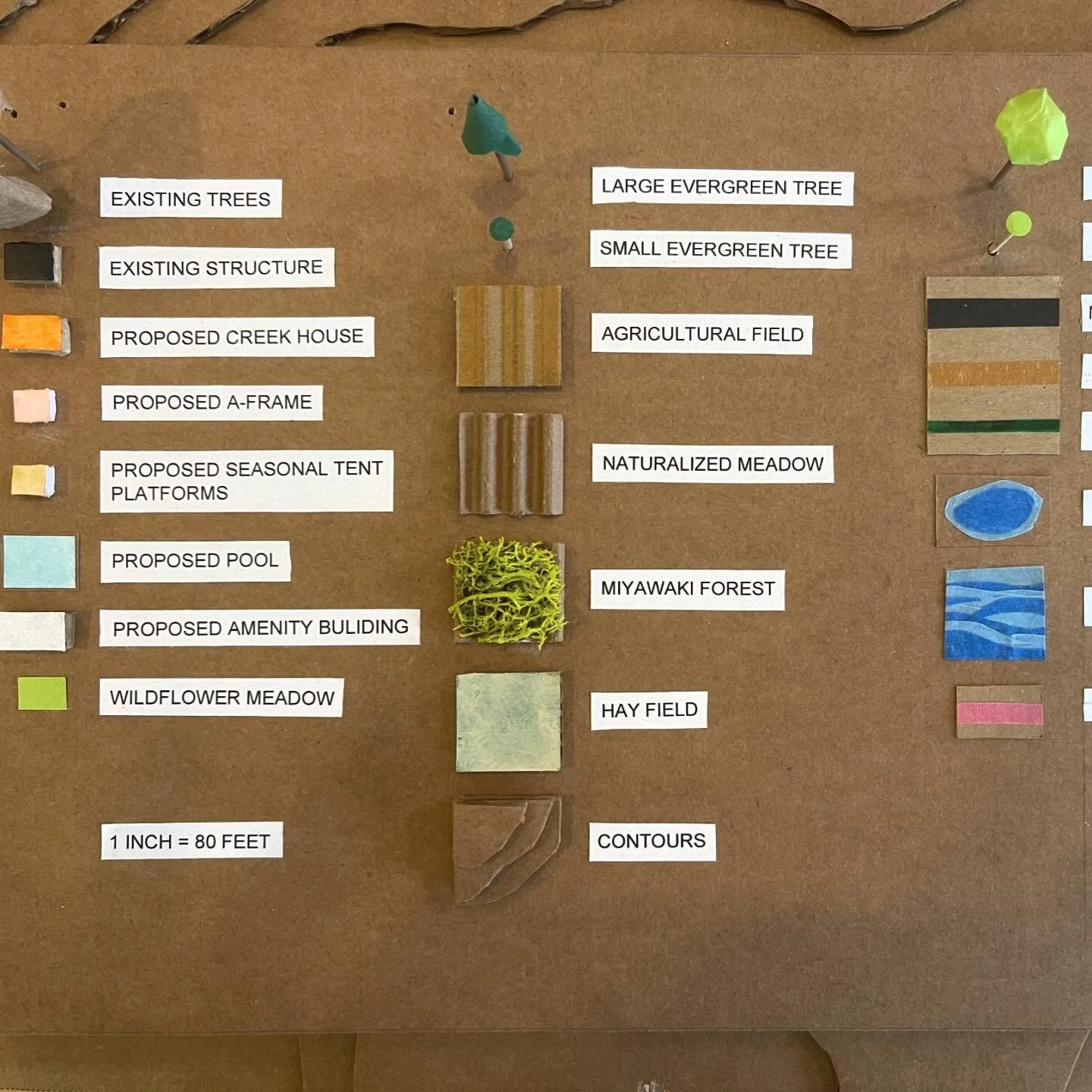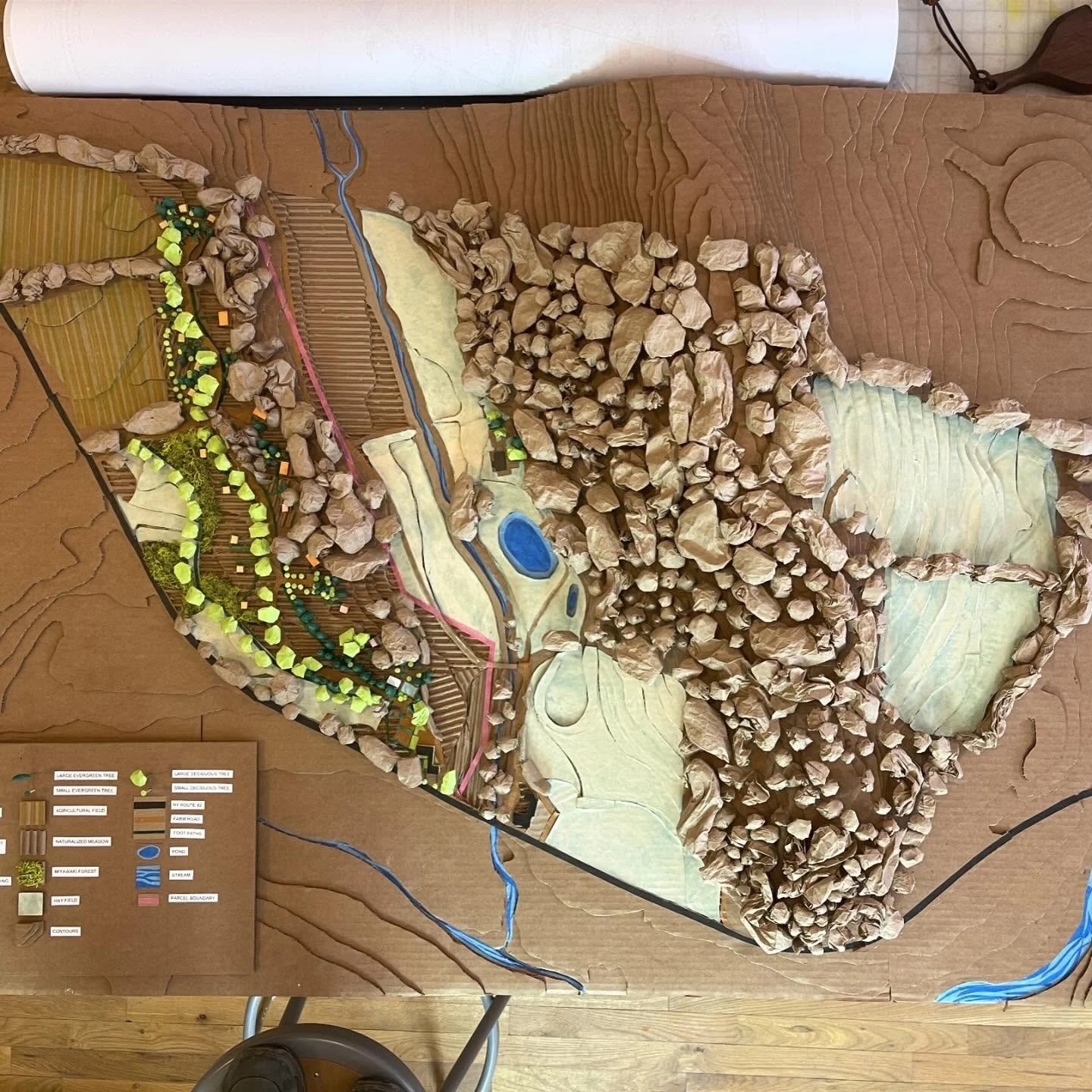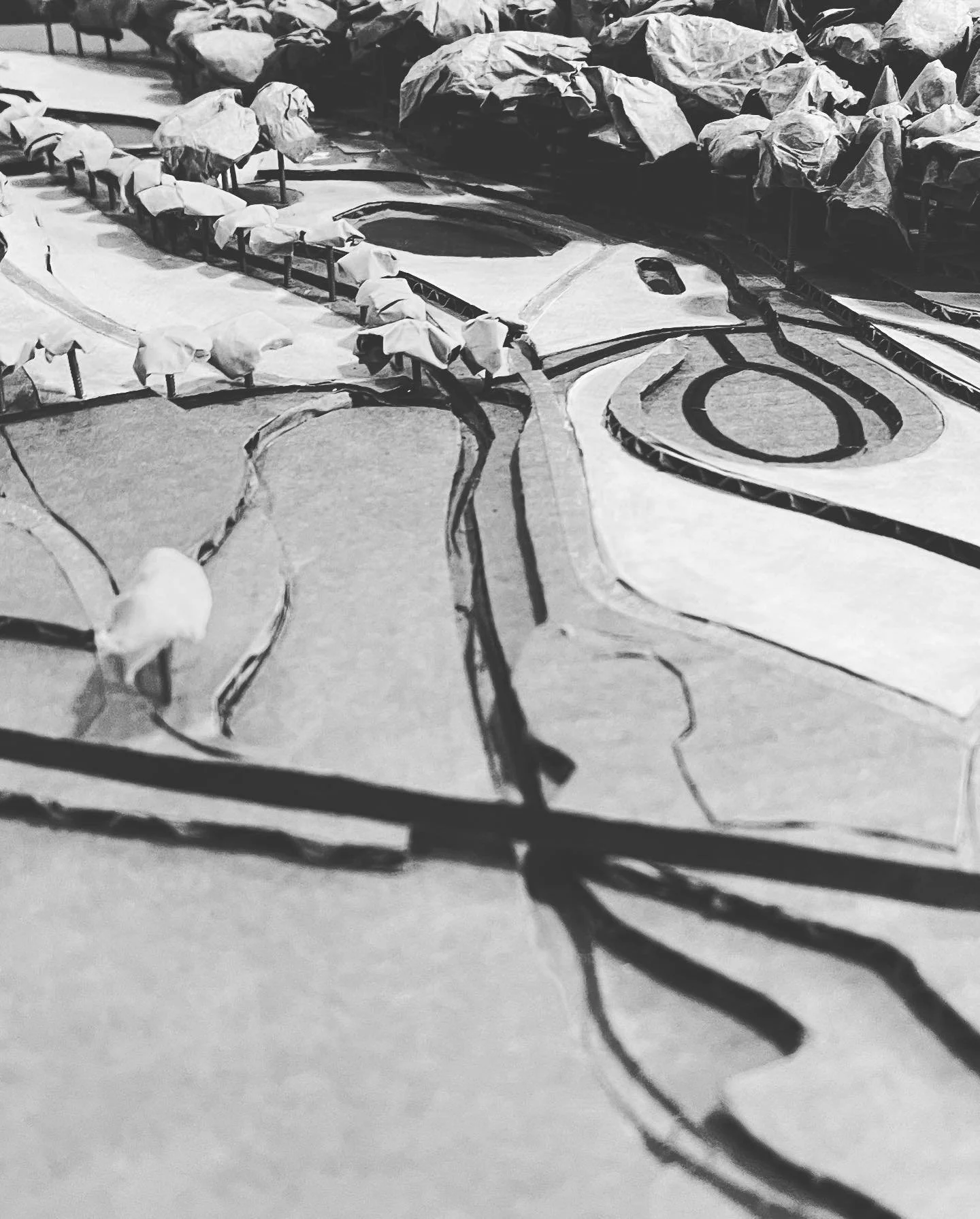Ironstar Farm Ecological Master Plan
Iron Star Farm was never built. But we carefully, lovingly imagined it.
This land in Ancram, New York—a place of gently sloping fields, second-growth forest, and a perennial stream winding through the lowlands—was the subject of our deep and deliberate listening. The wind already had a way through it. Trees cast long shadows across meadows where birds rose and fell with the seasons. The land was already speaking. Our work was to respond.
Out of that listening came a vision—not of development in the usual sense, but of quiet collaboration between people and place. It was an invitation to imagine how a farm, long touched by agriculture, could become a sanctuary not just for animals and people, but for the slow processes of healing: soil renewal, habitat return, the quiet presence of native plants coming back to life. We didn’t want to impose a new identity on the land—we wanted to support its return to balance.
Our work, shaped by our unusual collective of builders, ecologists, artists, and thinkers, was grounded not in abstract theory, but in a living ethic of care. We weren’t conventional development planners; our practice was rooted in stewardship, craft, and close attention to ecological process. Our plans weren’t blueprints in the traditional sense, but field maps for a deeper kind of relationship.
At Iron Star, the old tractor paths were to become walking and riding trails, tracing the contours of the land without erasing them. The pastures and hayfields would remain agricultural—not as a nostalgic gesture, but as living components of a healthy rural ecosystem—open spaces for grazing animals, perennial crops, and people learning to work the land with humility.
We imagined tree plantings, particularly long rows of Eastern Cottonwood and White Pine, as both ecological repair and visual poetry. These fast-growing natives would stabilize stream banks, offer shade to wildlife, and draw carbon from the air. But they would also mark time and memory, their presence creating a kind of rhythm in the landscape—windbreaks that whispered, lines that guided us toward stillness.
We emphasized native meadows over lawns, light over intrusion, and dark skies over artificial glare. We placed every proposed structure with care: buildings tucked respectfully along contours, away from steep slopes, shielded from view where needed. Even the materials we chose were considered—not just for durability, but for their footprint, their resonance with the land, their capacity to return quietly to the earth over time.
More than anything, our vision for Iron Star Farm sought to undo the idea that land is only valuable when it is built upon. We saw the farm as already whole, and planning as a way to move more deeply into that wholeness. Even manure management and water flow were thought through with precision—not because they were technical problems, but because they were part of a larger question: How do we live on this earth with grace?
Some might say our effort was wasted if it never broke ground. But those of us who know the land—who have spent time watching birds thread through tall grass or listening to a stream as it loosens the silence of dusk—understand: a project like this has value even in its unbuilt state. It is a record of how people can relate to place with reverence, with restraint, and with imagination.
Our response to community concerns was not defensive, but adaptive. We protected the stream corridors not just to comply with regulations, but with intention. We treated forest edges as thresholds, not boundaries to be breached. Even the light from our windows was considered for its impact on migrating birds. These were not gestures of design, but of care.
To imagine Iron Star Farm is to imagine a different kind of future—one in which agriculture and ecology are not in tension, but in conversation. One where trees are planted not for ornament, but for the breath of the world. One where human presence does not signal loss, but participation in something larger and ongoing.
Though we never built it, Iron Star Farm offered a glimpse into a more thoughtful way of making and tending place. It asked what it would mean to practice not development, but devotion. Not ownership, but reciprocity.
Some plans live only on paper. But others live in the mind and the soil, in memory and in the shift of thinking they provoke. Iron Star belongs to that second category. A project not of concrete and glass, but of possibility. A quiet offering to the future, still echoing through the trees.







